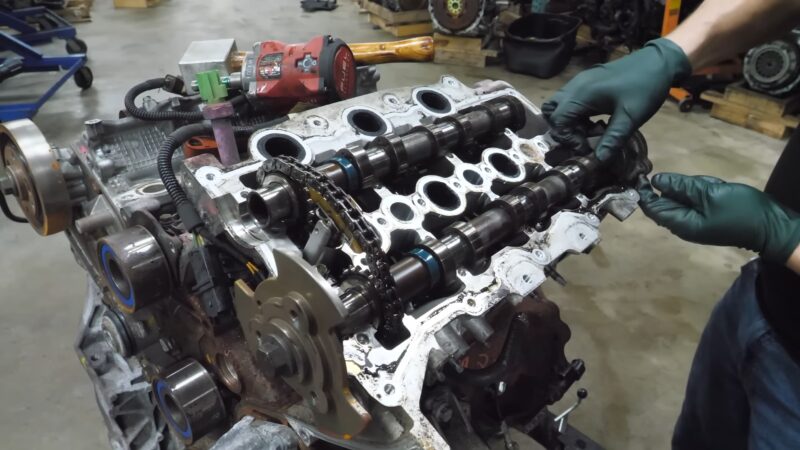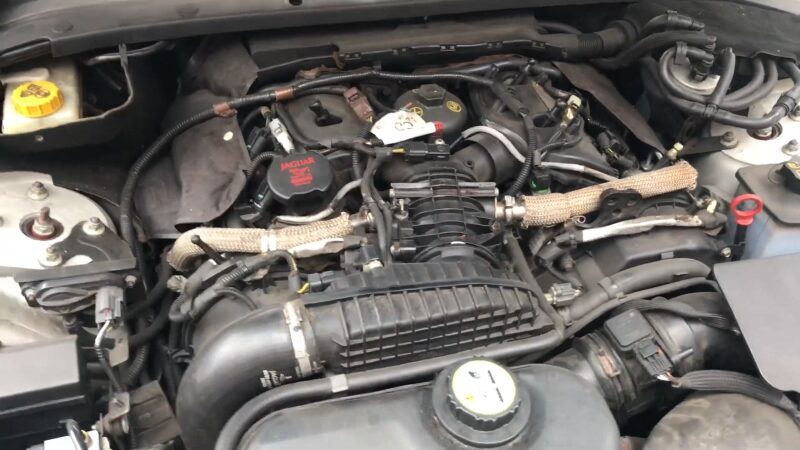Six-cylinder diesel engines are the best option for large crossovers and SUVs, not to mention commercial vehicles. The V6 motors provide good dynamics, have a reserve of endurance, and, at the same time, do not consume much fuel. However, some of these motors can’t boast of reliability.
Here are five diesel “sixes” that cause so many problems that there will be no time to worry about fuel consumption.
Engine index
Years of production
Application
Mercedes ОМ642
2005 to this day
Mercedes-Benz C-Class, CLS, CLK, E-Class, R-Class, ML, GLE, G-Class, GLK, GLC, GL, GLS, S-Class, Sprinter, X-Class, V-Class
Jeep EXL
2005 to this day
Chrysler 300C, Jeep Commander, Grand Cherokee
Land Rover 306DT
2009 to this day
Land Rover Discovery, Range Rover Sport, Range Rover, Velar
Jaguar AJV6D
2009 to this day
Jaguar XF, XJ, F-Pace
VW BDH 2.5 TDI
2004–2006
Audi A4 и A6, Volkswagen Passat
Mercedes OM642

Main problems: actuator of the intake manifold flap drive, piezo injectors, and system of changing the geometry of the turbine.
Who would have thought that the first diesel V6 Mercedes-Benz brought so many problems to the car owners? Not only Mercedes drivers suffered, but also those who bought a diesel Chrysler or Jeep. The engine in these cars has the EXL index.
The mechanics from the Indianapolis Mercedes dealership note that at the concept level, the unit design is successful: an aluminum block with cast-iron sleeves and a timing chain drive that can withstand at least 120,000 miles before the first repair.
What went wrong? First, the Mercedes diesel was plagued by leaks along the heat exchanger gaskets, located in the collapse of the block. This significantly increased the cost of a simple, at first glance, repair.
The manufacturer improved the design in 2010, but even after the upgrade, the failures of the intake manifold flap actuator, which occurred after 90,000 miles, did not go away. Piezo injectors, which are very demanding in fuel quality, also added problems.
The engine was equipped with a Garrett turbine. There are no complaints about it, as the turbine easily withstands up to 190,000 miles. The bad thing is that the turbine geometry change system often jams due to severe contamination. The oil pump is not the most resourceful, and since the engine is sensitive to oil pressure, you can also run into the bearings turning.
However, since OM642 is installed on many models, mechanics have had time to study it thoroughly. With careful operation, the diesel often travels up to 300,000 miles before major repairs.
Land Rover 306DT

Main problem: oil starvation, crankshaft failure.
The three-liter British diesel 306DT replaced the relative, a 2.7-liter one, famous for its tendency to oil starvation. In some cases, this led to scuffing of the liners, which ended in jamming and failure of the crankshaft. The three-liter, more modern engine also suffers from the same illness.
Owners of the fourth-generation Discovery, on which the 306DT was used most often, suffered the most. Those who serviced the SUV exclusively at an authorized dealer were lucky. There are precedents with engine replacement on non-warranty Land Rovers when the owner only pays for the work.
Current buyers of Discovery and Range Rover Sport do not need to change the engine assembly. There is a solution in the form of forged shafts and replacement kits. The good news for those who want to buy a diesel Jaguar XF or XJ is that crankshaft failures are much less common in lighter cars.
VW BDH 2.5 TDI

Main problem: the unpredictable service life of camshafts, a wedge of the turbine geometry changes the system.
Volkswagen diesel from the mid-2000s with a cast-iron block was created before everyone went crazy about efficiency and ecology. However, the 2.5 TDI engine with the BDH index, which was installed on the fifth-generation Passat and Audi A6 in the C5 body, became a headache for many car owners.
This diesel V6 is an updated version of another well-known engine, with the BAU index, updated to Euro-4. Environmental friendliness has improved, but the technical problems have not gone away.
Among them are constant leaks along the engine joints and from under the valve covers, malfunctions in the fuel injection pump, and most importantly – an unpredictable service life of camshafts. In this engine they are hollow, so they can break at very low temperatures or when using oil with an inappropriate viscosity.
VW stopped using diesel engines in the US and Canada after a problem with their diesel cars in 2015, and they bought back many vehicles. And it is a good reason for those still owning a car with this engine to sell it and buy something more reliable.

